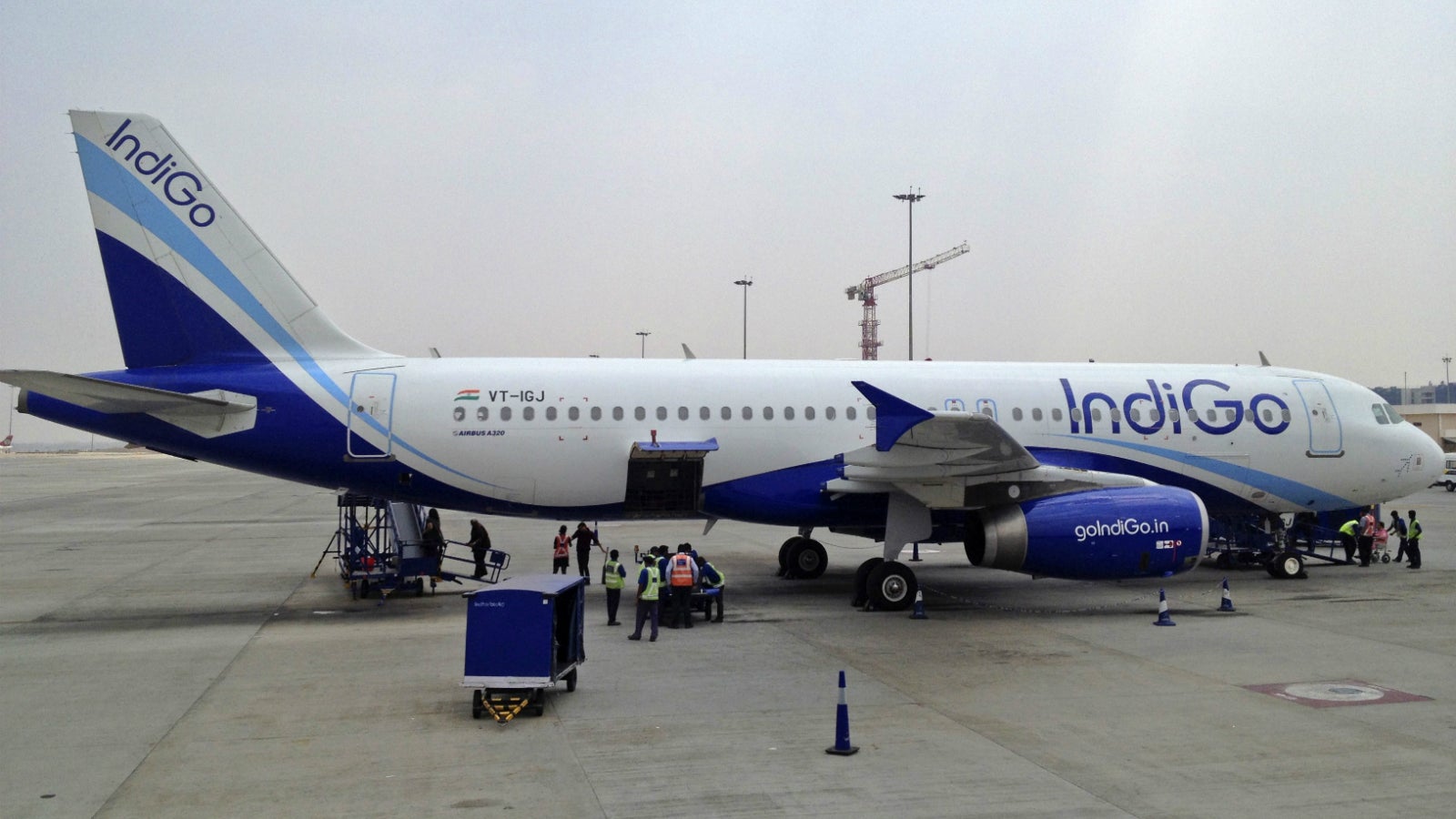Now, India’s largest airline joins the loss-makers’ club
Indian aviation’s last man standing has also fallen.


Indian aviation’s last man standing has also fallen.
On Wednesday (Oct. 24), IndiGo, India’s largest airline company by market share, reported losses for the first time since its listing three years ago.
For the quarter ended September, losses at InterGlobe Aviation, which runs and operates IndiGo, stood at Rs652 crore ($89.1 million), as per a filing with the BSE. In the same quarter last year, it had posted a profit of Rs551.6 crore.
The airline posted losses despite its revenue increasing 17% to Rs6,185 crore on the back of higher passengers flown. Though it flew more passengers, it made less money as it was unable to pass on the effects of rising costs to consumers, given the competitive environment.
“High fuel cost, rupee depreciation, and intense competition significantly impacted profitability,” the company stated. Its fuel spend alone surged 84% year-on-year to Rs3,035.50 crore during the July-September period.
The weakened finances have forced the company to change its plans for the immediate future.
IndiGo is now reviewing its aircraft purchase decisions. IndiGo earlier had plans to buy some A320neo aircraft but has now put off the decision to save cash. “At times when there is a little uncertainty we want to be prudent with cash, so right now we are holding off buying any A320s…,” Bhatia said during an analyst call.
IndiGo is only the latest Indian airline to face headwinds.
In the red
In the April-June quarter, both Jet Airways and SpiceJet had posted losses owing to rising fuel costs and a depreciating rupee. IndiGo’s profits had also nosedived 97% in the period.
Things only got worse in the following months. Due to rising international rates, Indian oil marketing companies increased aviation turbine fuel (ATF) prices by 7.25% on Oct. 01. A kilolitre of ATF is now priced at Rs74,177 in Mumbai. In Delhi, it costs around Rs74,530. This level was last seen four years ago in March 2014.
Upward pressure on global crude oil prices, a widening current account deficit, and fears of international trade wars have also led to a fall in the Indian rupee’s value. With foreign investors withdrawing $9.7 billion from the markets, the rupee has lost further ground.
But none of the airlines have passed on the rising costs to consumers in the fear for losing market share.
“Realisation has to improve if the sector wants to climb out of this mess. Their (IndiGo’s) passenger loading factor is around 87% which is definitely not bad. So at this point, the loading is pretty decent. The real issue is pricing power has to return,” an aviation sector analyst with a rating agency told Quartz on the condition of anonymity.
And this lack of pricing power is leading to losses.
“IndiGo’s strength of a very strong balance sheet and execution capability continue to give them a structural advantage, but competitive intensity, which is likely to sharpen further, has visibly impacted,” said Kapil Kaul, CEO and director for south Asia at consultancy firm CAPA .
Moreover, IndiGo’s long struggle with US aerospace manufacturer Pratt & Whitney’s engines is also beginning to hurt. ”IndiGo’s aircraft maintenance and repair costs have been pretty high as well, which is reflective of its engine troubles,” the analyst quoted above said.